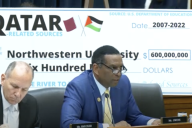You have /5 articles left.
Sign up for a free account or log in.
The botched rollout of the new Free Application for Federal Student Aid disproportionately affected low-income Black and Latino students, according to a new report from the Century Foundation.
As of May, nearly 300,000 fewer high school seniors had filled out the FAFSA this year than in 2023, the report found. But communities with large Black and Latino populations, a high number of residents living in poverty, or a preponderance of adults without college degrees had a 20 percent larger year-over-year completion gap than those with low shares of those populations.
The report also found that regions with lower average family incomes experienced steeper declines in completion rates than the national average; in Alabama and Mississippi, for instance, rates declined by more than 25 percent.
“The dropoff in FAFSA completions has been significantly worse among historically marginalized communities,” the report reads. “As a result, colleges are likely to see enrollment declines that are linked to race, educational attainment, and income.”
FAFSA completion declines in low-income and low-education regions are significantly larger than in wealthier, more educated regions: 51,000 fewer FAFSAs were filed year over year in high-poverty regions, for instance, and 42,000 fewer in regions with lower numbers of college-educated adults. But the gap was most severe in regions with large Black or Latino populations, down by 86,000 year over year.
The report also found that thanks to targeted efforts by state agencies and access organizations, completion gaps are narrowing more among low-income populations than any other. It also showed demographic gaps shrinking faster in states with mandatory FAFSA graduation requirements.
But even in the best-case scenario, completion rates will not be able to catch up to last year’s; the report predicts the final number of finished FAFSAs will be 4.8 percent lower than last year.









